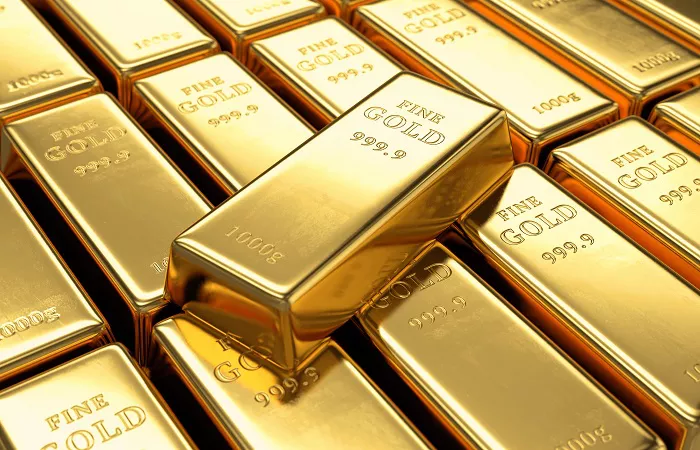Gold has captivated human beings for centuries, serving not only as a symbol of wealth and beauty in the form of jewelry but also as a crucial investment asset and a reliable store of value. If you’ve ever pondered, “What is the price of gold in the market?”, you’re about to delve into the intricate web of factors that determine the value of this precious metal.On the contrary, when interest rates rise, investors may shift their funds towards interest – bearing assets such as bonds, causing the price of gold to decline.
Factors Affecting Gold Prices
Macroeconomic Conditions
Interest Rates: Interest rates play a significant role in determining gold prices. When interest rates are low, the opportunity cost of holding gold (since it doesn’t generate interest like some other financial assets) decreases. This makes gold more appealing to investors. For example, during the period after the 2008 financial crisis when central banks around the world implemented low – interest – rate policies, the price of gold steadily increased.
Inflation: Gold is widely regarded as a hedge against inflation. When the general price level in the economy is rising (inflation), the value of the currency depreciates. Since gold is a tangible asset, its price tends to increase to maintain its purchasing power. For instance, in the 1970s, high inflation in the United States led to a substantial rise in the price of gold as investors sought to safeguard their wealth.
Economic Growth: The state of the global economy also has a profound impact on gold prices. In times of economic uncertainty or recession, investors tend to flock to safe – haven assets like gold. For example, during the COVID – 19 pandemic, as economies worldwide faced lockdowns and slowdowns, the price of gold reached new highs as investors sought the stability that gold offered.
Geopolitical Tensions
Geopolitical events such as wars, political unrest, and trade disputes can cause significant fluctuations in gold prices. When there is geopolitical uncertainty, investors become risk – averse and look for safe – haven assets. Gold, with its long – standing reputation as a store of value, is a popular choice. For example, the ongoing trade disputes between major economies in recent years have led to increased demand for gold, driving up its price. Similarly, military conflicts in regions like the Middle East can also trigger a spike in gold prices as investors worry about the potential impact on the global economy.
Supply and Demand
Mining Production: The amount of gold mined each year affects the overall supply in the market. If there are disruptions in major gold – mining regions due to factors such as labor strikes, natural disasters, or political instability, the supply of gold can decrease, leading to higher prices. Conversely, new gold discoveries and increased mining efficiency can increase the supply and put downward pressure on prices.
Jewelry Demand: Gold is a popular material for jewelry, especially in countries like India and China. The demand for gold jewelry is influenced by cultural factors, economic conditions, and fashion trends. For example, during festivals and wedding seasons in India, the demand for gold jewelry surges, which can drive up the price of gold.
Investment Demand: The demand for gold as an investment, through vehicles such as exchange – traded funds (ETFs), gold futures, and physical bullion, also plays a crucial role. When investors are optimistic about the future performance of gold, they increase their investment, driving up the price. For example, the growing popularity of gold ETFs in recent years has provided investors with an easy way to invest in gold, contributing to increased investment demand.
Currency Movements
Since gold is priced in US dollars in the international market, the value of the dollar has a significant impact on gold prices. When the US dollar weakens, it takes more dollars to buy the same amount of gold, so the price of gold in dollars goes up. Conversely, when the dollar strengthens, the price of gold in dollars tends to decline. For example, if the euro strengthens against the dollar, European investors can buy more gold with the same amount of euros, potentially increasing the demand for gold in the euro – zone and affecting the overall global price.
Historical Gold Price Movements
1970s: In the 1970s, gold prices skyrocketed. The breakdown of the Bretton Woods system, which had fixed the value of the US dollar to gold, led to a period of currency instability. High inflation rates and geopolitical tensions also contributed to the rise in gold prices. By 1980, the price of gold reached an all – time high.
2000s – 2010s: After a relatively stable period in the 1980s and 1990s, gold prices started to rise again in the 2000s. The global financial crisis of 2008 – 2009 further accelerated this upward trend as investors sought the safety of gold. The price of gold reached a peak of around $1,900 per ounce in 2011.
Recent Years: In recent years, gold prices have continued to be influenced by the factors mentioned above. As of 2025, gold prices have been on an upward trajectory, reaching new highs due to a combination of low – interest – rate policies, geopolitical tensions, and inflation concerns.
Conclusion
Understanding the price of gold in the market is a complex but rewarding endeavor. By keeping an eye on the various factors that influence its price, investors can make more informed decisions about buying, selling, or holding gold. Whether you’re a seasoned investor or just starting to explore the world of precious metals, the price of gold will always be an important factor to consider.
- How Much is the Gold Price in the UK?
- Will Gold Price Continue to Rise?
- What Is the Current Price for 1 Oz of Gold?


